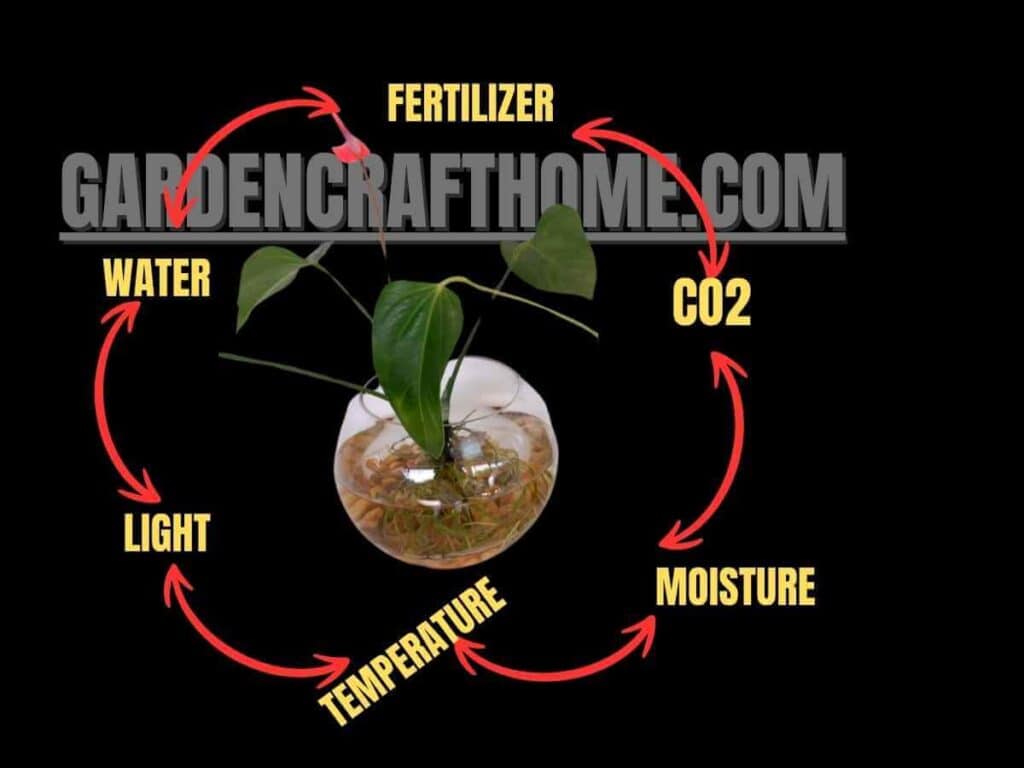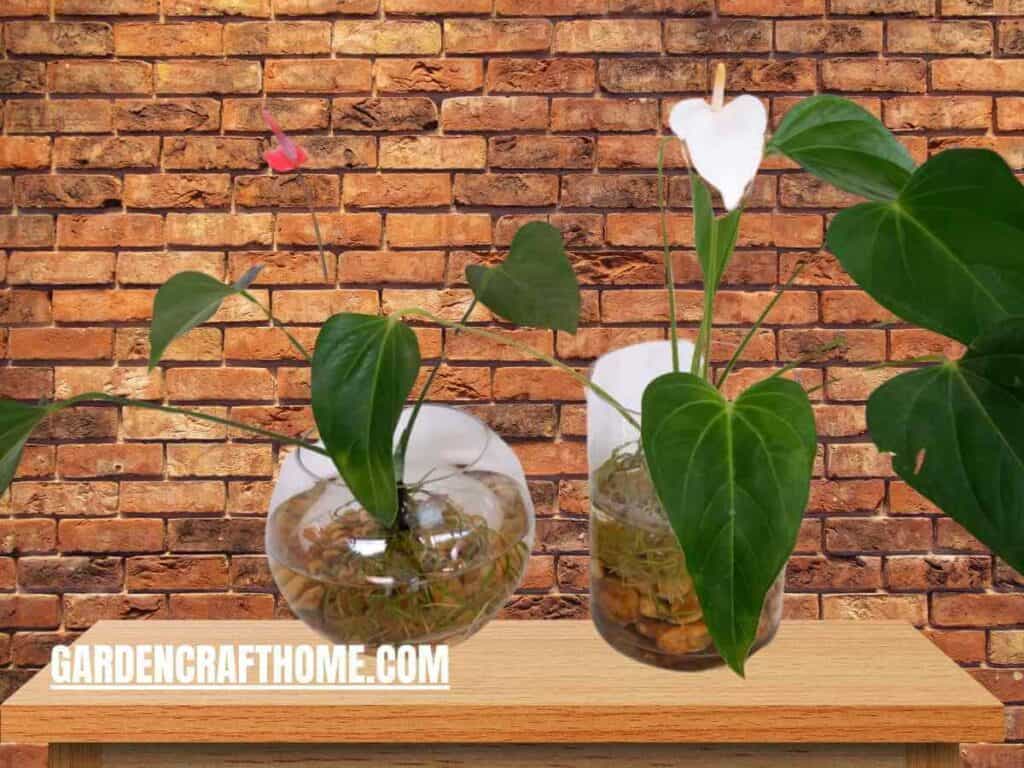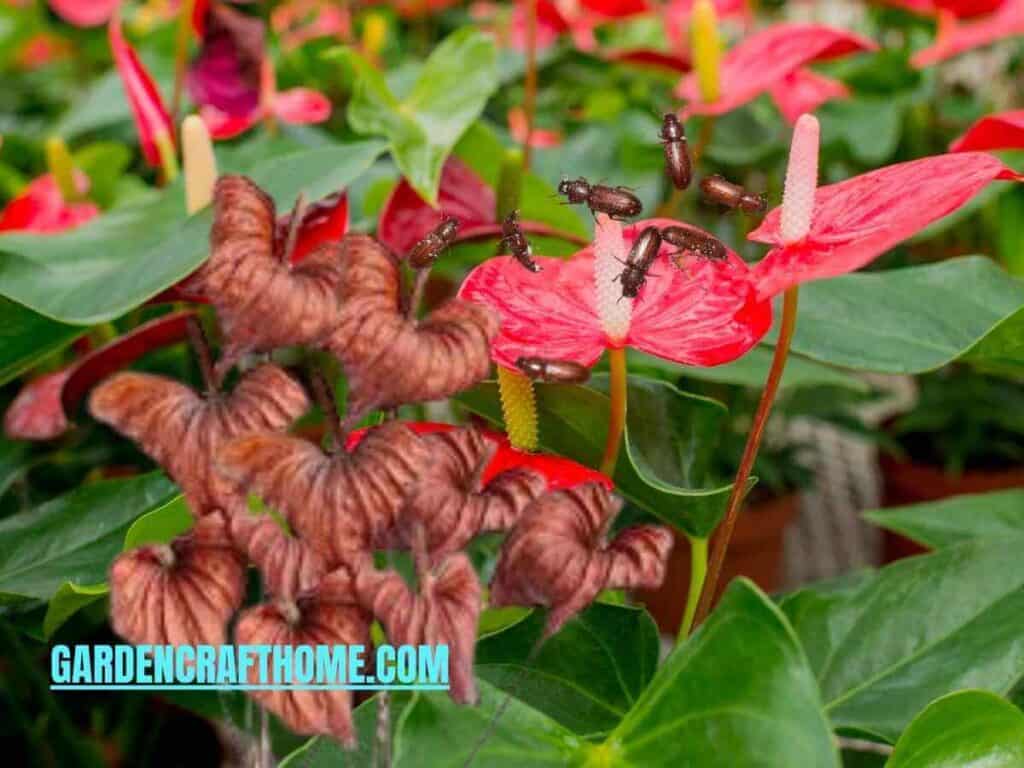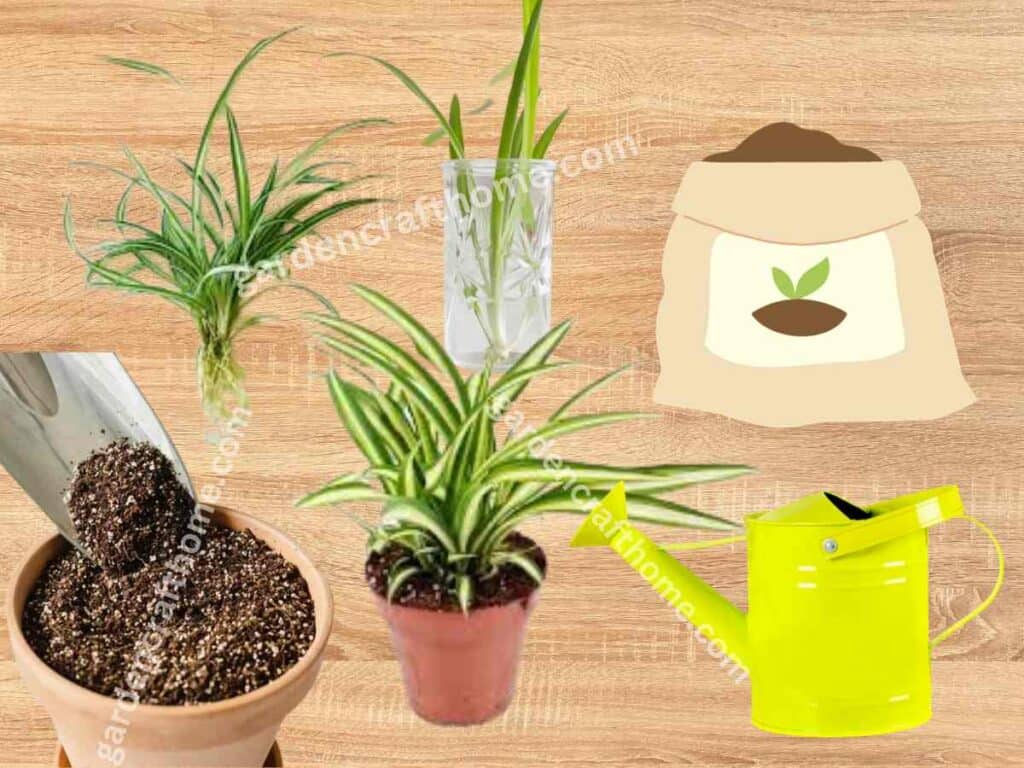You are going To learn how to Grow Anthurium In Water. I will also clarify what hydroculture consists of.
To allay your concerns, I will also go over the benefits and disadvantages of cultivating anthurium in water, along with a step-by-step video lesson.
You will have acquired all the knowledge necessary to grow Anthurium in water at the end of the reading.
Interested to know how to grow pothos in water? Click here.
Let’s get started
What Is Hydroponics Or Hydroculture?
Let’s have a look at what hydroponic cultivation is before moving forward.
Hydroponics is a method of growing plants, medications, and vegetables without soil by utilizing minerals and nutrients found in water.
There are numerous methods; some merely employ water as the plant’s food source, while others use inert substrates.
To ensure adequate oxygenation in the water, hydroponics can also use automatic watering systems, pumps, or oxygenators—similar to those used in aquariums in addition to substrate.
Your chosen method will depend on the type of plant you want to cultivate, the money you have, and the environmental conditions.
What Water Should I Use For Anthurium In Hydroponics?
Utilize bottled mineral water or filtered or demineralized air conditioner water to cultivate Anthurium in hydroponics.
To diffuse the chlorine in tap water, decant it for a full day before using it.
Additionally, confirm that it is not too hard or limestone-rich. This would eventually lead to issues.
In this case, you may mix demineralized water (from the dryer, air conditioner, or dehumidifier) with municipal water at a 1:1 ratio.
The pH of the water must be between 5.4 and 6.2 for the Anthurium to absorb all macro- and micronutrients.
A pH meter may be used to measure it, and pH- can be used to rectify it.
What Are The Requirements For Growing Anthurium In Water?
A broad, appropriately sized, and shaped glass container is all that is required.
The mouth must be wide to allow air to circulate the stem of the anthurium and avoid air stagnation and mold.
The ideal shape of the pot is U-shaped or V-shaped, while those that narrow at the height of the hole should be avoided.
To support the plant and prevent it from bending or falling.
Using a large pot to contain the roots, including part of the stem, is mandatory.
Suppose you decide to add beauty and stability. In that case, you can add pebbles or other materials to the bottom of the boiler. Boil those materials in water for 10 minutes to sterilize them.
How Do I Repot Anthurium In Water?

Before repotting anthurium in water, examine the plant and the root to see if they are healthy.
The healthiness increases. The chances of the plant adapting quickly to water and being responsive to its surroundings.
As in traditional repotting, the best time to do it is in the spring or summer.
Long, bright days stimulate the plant’s metabolism, making it more responsive to changes.
The steps to transfer an anthurium into water are:
Water the plant.
Water your plants for 15-30 minutes before transplanting to soften their roots and keep them from breaking.
Remove the plant from the container.
Gently touch the borders of the container to dislodge the lump of dirt; there is no need to pull the plant.
Remove all the soil from the roots.
Carefully remove all of the substrate, including the coconut fiber cylinder, which is often located around the collar.
Be as gentle as possible to prevent injuring the roots.
Remove decaying roots and dry the parts.
If you discover any dry or soft roots, remove them with bleach-sterilized scissors or scald them briefly with a flame.
Rinse the root system under the tap.
Using warm water, clean the roots well. At the end of the operation, there should not be even a bit of soil left.
Leave the roots to dry for 12–24 hours.
If you have cut some roots or they have broken, this amount of time will be enough for the cuts to heal.
Do not skip this step unless the roots are excellent.
Pot the plant.
Carefully place the roots into the pot, making sure the collar is just over the rim. It will not be adequately aired and will rot if it is too deep.
Add water at room temperature.
The anthurium’s collar and roots must be submerged in water, but its stem and foliage must stay dry.
For more information on how to repot in anthurium, click here. [link]
Even if the plants in question are not the most beautiful, this video shows the process well:
How Long Does Anthurium Last In Water?
Under the right environmental and growing conditions, anthurium can live in water for its entire life.
Hydroponics is not a technique for rooting dead plants but rather a long-term approach to plant maintenance.
To achieve this, it is necessary to offer the plant all the care of traditional cultivation in pots, such as:
- Temperature between 18 and 30°C
- High ambient humidity (possibly above 60%)
- Air recirculation
- abundant diffused light (not exceeding 25000 lumens)
- Regular fertilization with mineral fertilizer rich in phosphorus and potassium
To learn more about how to care for anthurium, click here. [link]
There are other things in hydroculture that you have to pay attention to (we will see them in detail shortly).
You need to understand that without these assumptions, the anthurium will struggle to grow in soil and water.
How To Maintain Anthurium In Hydroculture After Planting
After repotting the anthurium in water, it is important to keep the plant under observation and remove any rotten roots.
The water may become cloudy, which must be replaced.
This process continues until the plant has adapted or the water remains clear.
For the anthurium to adapt to hydroculture and grow, it must be guaranteed the right climate, sufficient light, and all the substances it needs.

The roots need oxygen, and by keeping the water level low, the air exchange will be sufficient to guarantee sufficient oxygen.
Top up the water every week, bringing it back to the level of the collar, while it should be completely replaced when algae begins to form.
Not that algae are harmful to the anthurium; in fact, they help oxygenation, but they are rather unsightly, and if the pot is large enough, their role is negligible.
From March to September, add slow-release hydroponic fertilizer whenever you completely replace the water.
During autumn and winter, reduce the dosage or completely stop fertilizing.
Finally, make sure the plant remains in a ventilated environment to prevent fungal diseases.
If necessary, use a small fan to keep the air moving.
What Pros And Cons Come With Grow Anthurium In Water
Growing an Anthurium hydroponically entails minor complications compared to potting soil, particularly in the long term or if you lack a specific “sensitivity” toward plants.
The so-called green thumb.
Advantages, such as:
- Aesthetically, it sets the scene and looks very charming.
- Avoid having to repot the plant periodically.
- Fast and effective root control
- Watering will be reduced to an occasional topping-up of water.
- Better nutrient absorption (as long as the pH of the water remains in the right range)
- Fewer parasitic problems
The disadvantages are:
- Daily check-up during the first few weeks after putting anthurium in water
- The plant may not adapt immediately to water (appearance of yellow or spotted leaves).
- Not all species behave. For example, Anthurium clarinervium is difficult to keep in water. Click here to learn about Anthurium Clarinervium Care. [link]
4. Increased chance of root rot
5. A modest fan may be required to improve ventilation.
6. To sustain plants in the long run, it becomes important to regulate the pH of the water so that it stays within the proper range.
To know why anthurium appears yellow, click here [link]. To learn why anthurium has spotted leaves, click here [link].
From my perspective, growing anthurium in a pot with water (i.e., without an appropriate hydroponic system) should not be done to enhance the plant’s growth environment.
Rather, this is a technique of challenging ourselves, experimenting, and deepening our knowledge of the plant.
Alternatively, make the plant more ornamental by selecting a media that is neither better nor worse than regular potting soil.
For a better understanding of how to maintain an anthurium, click here. [link]
Is It Safe To Put Cuttings Of Anthurium In Water?
Water is a good medium for rooting Anthurium cuttings or young tufts separated from the mother plant. Once rooted, small seedlings may be retained in water or moved to the soil.
However, in order to prevent straining the root system, you must continue gradually. If Anthurium cuttings are rooted in water, they quickly adapt to the environment.
Transferring them immediately into the soil (with a variable pH and humidity level) may cause them to die, disrupting the rooting process.
Adopting a cutting or a young plant that has been hydrated must be done as follows:
Put the cutting in the desired planting container and add enough water to cover the collar.
To hold onto the water and stop it from dripping out of the drainage holes, keep the pot inside of a container.
Add a little bit of soil every 2 days.
On the first day, a watery mush will be created, gradually becoming denser as you add more soil.
Once the jar is full of soil, the operation is complete.
Keep the substrate moist for the first week, then let it gradually dry until you reach the normal watering frequency.
Learn more about watering an anthurium by clicking here [link].
Remember that the best time to repot is in the spring or during the summer.
To do this in winter, it will be necessary to integrate the light with artificial lighting.
Final Thoughts
Now that you understand how to grow anthurium in water, it is essential to take maintenance seriously.
I will advise you to change the water when needed or clouded. Remember, proper care is the key to the successful growth of anthurium in hydroponics.
If you are still confused about caring for anthurium, click here [link] to read our dedicated article on Anthurium care.
Are you interested in learning how to grow pothos in water? Click here.





